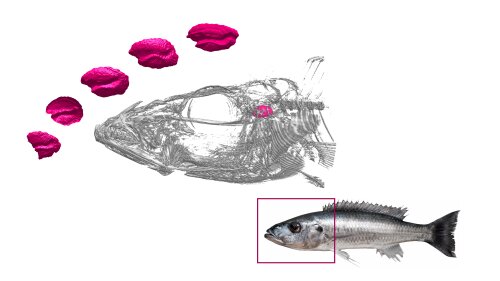Promoter: Sam Van Wassenbergh

Supervisor: Joey Cabasan
Subject: Otoliths, or earstones, are small calcified structures in the inner ear of fishes that play an essential role in hearing, balance, and spatial orientation. Their morphology represents a complex interplay between genetics, development, and environment, making them valuable proxies for understanding ecological adaptation and evolutionary diversification. Despite their functional importance, otoliths remain understudied in evolutionary context compared to other morphological traits.
This project will investigate otolith diversity within the adaptive radiation of Lake Malawi cichlids, one of the most remarkable cases of rapid vertebrate diversification, encompassing over 700 species that evolved within the last two million years. Using high-resolution 3D reconstructions and geometric morphometric analyses of otoliths from more than 50 species, this study will investigate how otolith shape variation correlates with ecological specialization, sensory function, and phylogeny. Specifically, the project will explore three main questions:
- Is otolith shape variation among species mainly driven by body size (allometry), or does it correlate with ecological niches (e.g., rock-dwelling, pelagic, benthic, riverine)?
- Does variation in the sulcus (the depression housing sensory epithelia) relate to differences in swimming mode across trophic groups (e.g., piscivores, planktivores, algivores, invertivores)?
- Does otolith morphology differ among species occupying shallow versus deep habitats?
Student profile: The ideal candidate will have a strong interest in evolutionary biology, functional morphology, or fish ecology. Familiarity with R and/or morphometric software (Image J, 3D Slicer, Dragonfly) is desirable but not required, as training will be provided.